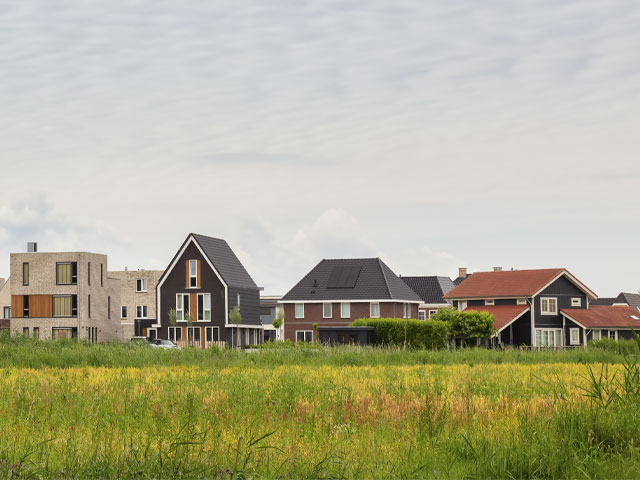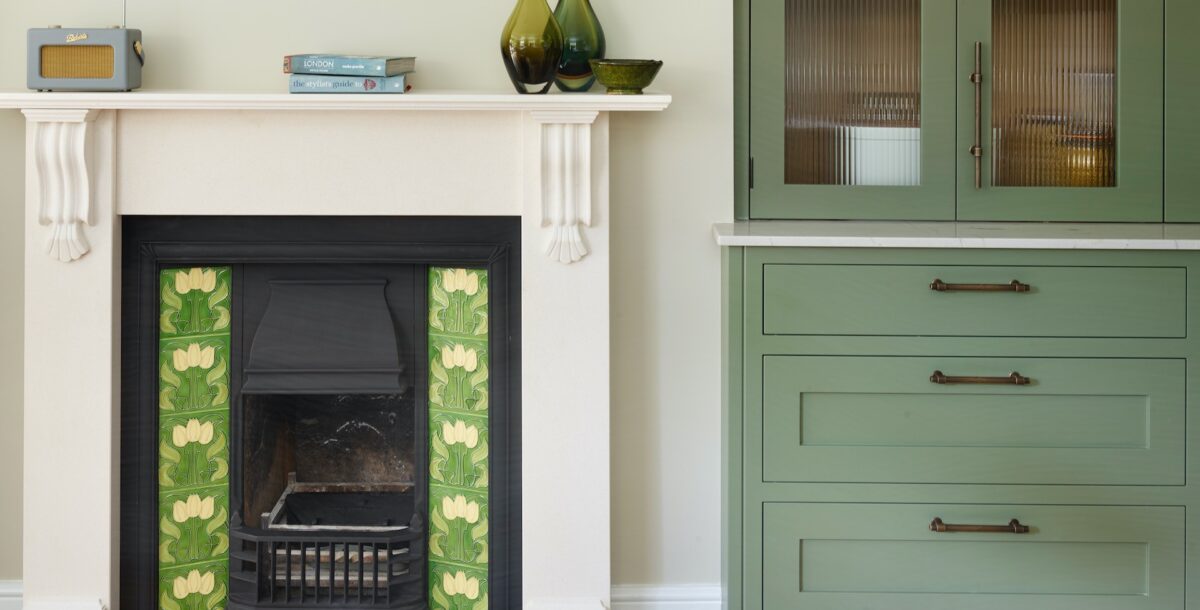What happened to the self-build revolution?
Kevin McCloud reflects on a decade of missed opportunity for UK self-builders
The self-build revolution is upon us. That was the message of the government just over a decade ago.
The 2012 National Planning Policy Framework, a supposed replacement for all of the UK’s planning policies, set out the requirement for all new developments to account for self-build by allocating a percentage of new dwellings to be built or commissioned by homeowners. It was followed by an important piece of legislation, the Right to Build Act, in 2016.
In 2012 the government also launched the Planning Portal, a one-stop digital planning access point, and a trip to Almere on an island outside Amsterdam, the Netherlands, to see the construction of a new self-build suburb of 1,000 homes.
It was all spearheaded by Grant Shapps, a rare housing minister who lasted for more than 15 minutes – there have been 15 Conservative housing ministers in the past 12 years.
The trip was the culmination of his plans to show us a shining example of how self-build and custom-build are a significant part of the European housing delivery model. If you’re sceptical, the numbers will persuade you. In Austria around 80% of all new homes are custom- or self-built.
Householders have a choice of thousands of small builders and dozens of off-site fabricators to help them realise a bespoke home on a budget. In Germany you can visit any one of 20 permanent exhibition sites to see homes from up to 50 manufacturers.
Or you can join a bunch of like-minded people to form a building group and construct your own block of flats. Or you can register as a social housing tenant and become part of a client group for a housing association.

Almere in the Netherlands is a self-build suburb of 1,000 homes. Photo: Martin Bergsma / Adobe
The UK self-build sector
In the UK, by contrast, around 8% of our new homes are delivered through self- or custom-build, while the housing market is still dominated by several vast firms – Bellway’s turnover this year was £3.5 billion, while Barratt led the way at around £5 billion.
Shapps’ 2012 aim was to double the UK’s self-build market to around 20% of all new homes, but nothing seems to have changed much. In a report from January 2022 the Cambridge Centre for Housing and Planning Research found that the figure stands between 8-12%, but remains ambiguous because of remarkably poor data collection in central government.
The National Custom & Self-Build Association has identified modest improvement in the UK, thanks mainly to growth in Scotland and Northern Ireland. On the ground there are relative hot spots of activity, such as Cornwall and the Lake District. Anecdotally, North Lincolnshire looks like an interesting place to build.
In the first series of Grand Designs: The Street, screened on Channel 4 in 2019, we followed 10 households as they built the very first pioneer homes at Graven Hill in Bicester, Oxfordshire, a scheme influenced by Almere, where the local authority bought a Ministry of Defence site and are packaging up the remaining 2,000 plots with fully serviced slabs.
For the second series, Grand Designs: The Streets, we followed another bunch of homeowners, some of whom were hardcore self-builders, while others chose the custom-build route and commission a semi-tailored home from a prefab company.
All these households were constructing on the main Graven Hill site where, every week, a new crop of homes would seem to spring up. For series three, to be broadcast in 2023, we’ll be returning to Graven Hill, but also spending time on self-build schemes in Glasgow and York.

Self- and custom-builders from Grand Designs: The Street. Photo: Channel 4
Progressive housing hotspots
It is good that this new series is not simply a publicity machine for Bicester and that there are new multi-dwelling projects emerging around the country, but I thought all this would happen with greater energy and a lot faster too.
Glasgow City Council has identified a first pioneer site for themselves on which half a dozen self-builders are being left to their own devices with, it seems to me, very little support.
In York, a city long-revered for its progressive social housing policy – the businessman and philanthropist Joseph Rowntree began his work there – the local authority is pioneering a small six-home self- and custom-build project together with a developer and construction company who are regenerating a wider suburb in the city.
The planning deal clearly traded the six homes for wider development opportunities for the developer – as national planning policy encourages and demands – so this public/private arrangement is to be applauded.
But the six resident household builders have faced surprising difficulties with ground levels, services and support, despite interest and help from the city and the developer. It is as though the partnership approach has left too many gaps and holes for our plucky self-builders to fall through.

Graven Hill had a promising start as part of the self-build revolution. Photo: Beauty & Bicester
What’s hampering the self-build revolution?
And what of Graven Hill in series three? Does it continue to be as architecturally and socially interesting as promised? No.
Covid, Brexit and the shocks in construction costs and market confidence inevitably led to a slowdown in plot sales and finished homes. Despite a relatively healthy mortgage market for self- and custom-build clients, the Graven Hill Village Development Company has had to think creatively to maintain sales of its 2,000 plots.
The first 300 homes were, on the whole, a mix of the idiosyncratic, odd and inspiring. Now there is a risk that the architecturally visionary houses there might be swamped by the mediocre new dwellings being built.
In a country where developers fight to dump their social housing obligations elsewhere, the social mix at Graven Hill is refreshingly healthy, but the social housing there is not as inspiring as it should be. And single new plots have been now sold to local building firms who are now knocking up two, three or more standard fare developer homes across the site.
Our housebuilding model is very open market, hollowed out and highly competitive. Local authorities tend to be under-resourced, dependent on private entities and lacking confidence to drive their own housing delivery schemes.
Social support and services in our communities have, as we know, been reduced to almost nothing. The grand Conservative self-build plan of 10 years ago has been undermined, not least by the political thinking of that same party in government.









